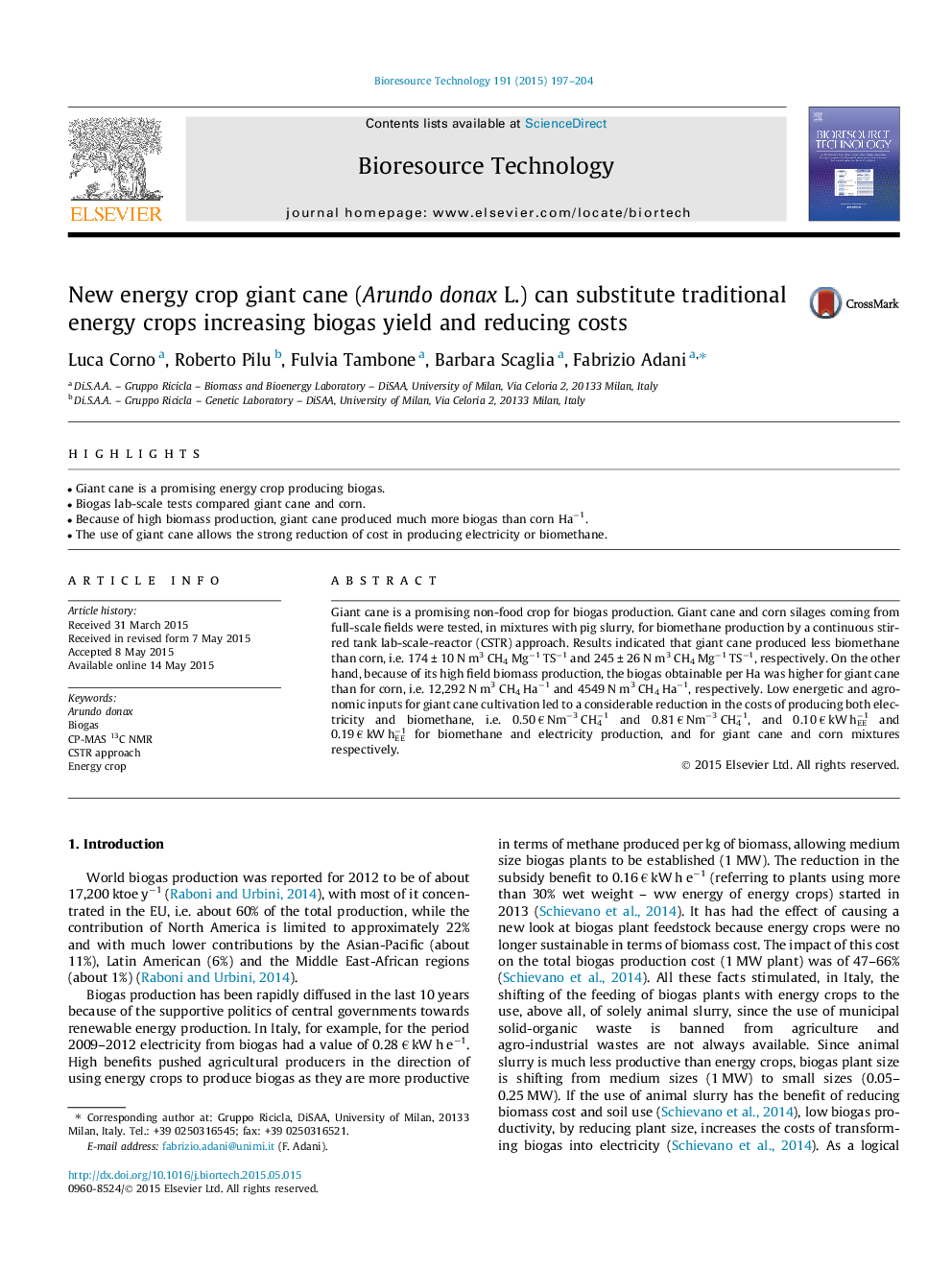| Article ID | Journal | Published Year | Pages | File Type |
|---|---|---|---|---|
| 679579 | Bioresource Technology | 2015 | 8 Pages |
•Giant cane is a promising energy crop producing biogas.•Biogas lab-scale tests compared giant cane and corn.•Because of high biomass production, giant cane produced much more biogas than corn Ha−1.•The use of giant cane allows the strong reduction of cost in producing electricity or biomethane.
Giant cane is a promising non-food crop for biogas production. Giant cane and corn silages coming from full-scale fields were tested, in mixtures with pig slurry, for biomethane production by a continuous stirred tank lab-scale-reactor (CSTR) approach. Results indicated that giant cane produced less biomethane than corn, i.e. 174 ± 10 N m3 CH4 Mg−1 TS−1 and 245 ± 26 N m3 CH4 Mg−1 TS−1, respectively. On the other hand, because of its high field biomass production, the biogas obtainable per Ha was higher for giant cane than for corn, i.e. 12,292 N m3 CH4 Ha−1 and 4549 N m3 CH4 Ha−1, respectively. Low energetic and agronomic inputs for giant cane cultivation led to a considerable reduction in the costs of producing both electricity and biomethane, i.e. 0.50 € Nm−3 CH4−1 and 0.81 € Nm−3 CH4−1, and 0.10 € kW hEE−1 and 0.19 € kW hEE−1 for biomethane and electricity production, and for giant cane and corn mixtures respectively.
